Potřebujeme váš souhlas k využití jednotlivých dat, aby se vám mimo jiné mohly ukazovat informace týkající se vašich zájmů. Souhlas udělíte kliknutím na tlačítko „OK“.
ASTM D4631-95(2008)
Standard Test Method for Determining Transmissivity and Storativity of Low Permeability Rocks by In Situ Measurements Using Pressure Pulse Technique (Withdrawn 2017)
Automaticky přeložený název:
Standardní zkušební metoda pro stanovení propustnosti a storativity nízké propustnosti Rocks in situ měření pomocí tlaku Pulse techniku
NORMA vydána dne 15.9.2008
Informace o normě:
Označení normy: ASTM D4631-95(2008)
Poznámka: NEPLATNÁ
Datum vydání normy: 15.9.2008
Kód zboží: NS-27960
Počet stran: 8
Přibližná hmotnost: 24 g (0.05 liber)
Země: Americká technická norma
Kategorie: Technické normy ASTM
Kategorie - podobné normy:
Zemní práce. Hloubicí práce. Budování základů. Podzemní práce
Anotace textu normy ASTM D4631-95(2008) :
Keywords:
borehole drilling, discontinuities, fault zones, field testing flow and flow rate, groundwater, permeability, pressure testing, pulse testing, rock, saturation, storativity, transmissivity, viscosity, water, water saturation: Borehole drilling, Discontinuities--rock, Fault zones, Field testing--rock, Flow and flow rate--soil/rock/related materials, Permeability--soil/rock, Pressure testing--rock, Pulse testing, Rock materials/properties/analysis, Saturation, Storativity
Doplňující informace
| Significance and Use | ||||||||||||||||||||||||||||||||||||||||||||
|
Test Method—The pulse test method is used to determine the transmissivity and storativity of low-permeability formations surrounding the packed-off intervals. This test method is considerably shorter in duration than the pump and slug tests used in more permeable rocks. To obtain results to the desired accuracy, pump and slug tests in low-permeability formations are too time consuming, as indicated in Fig. 1 (from Bredehoeft and Papadopulos (1)). Analysis—The transient pressure data obtained using the suggested method are evaluated by the curve-matching technique described by Bredehoeft and Papadopulos (1), or by an analytical technique proposed by Wang et al (2). The latter is particularly useful for interpreting pulse tests when only the early-time transient pressure decay data are available. Units: Conversions—The permeability of a formation is often expressed in terms of the unit darcy. A porous medium has a permeability of 1 darcy when a fluid of viscosity 1 cP (1 mPa·s) flows through it at a rate of 1 cm3/s (10−6 m 3/s)/1 cm2 (10−4 m2) cross-sectional area at a pressure differential of 1 atm (101.4 kPa)/1 cm (10 mm) of length. One darcy corresponds to 0.987 μm2. For water as the flowing fluid at 20°C, a hydraulic conductivity of 9.66 μm/s corresponds to a permeability of 1 darcy. Viscosity of Water—Table 1 shows the viscosity of water as a function of temperature. TABLE 1 Viscosity of Water as a Function of Temperature
|
||||||||||||||||||||||||||||||||||||||||||||
| 1. Scope | ||||||||||||||||||||||||||||||||||||||||||||
|
1.1 This test method covers a field procedure for determining the transmissivity and storativity of geological formations having permeabilities lower than 10−3 μm2 (1 millidarcy) using the pressure pulse technique. 1.2 The transmissivity and storativity values determined by this test method provide a good approximation of the capacity of the zone of interest to transmit water, if the test intervals are representative of the entire zone and the surrounding rock is fully water saturated. 1.3 The values stated in SI units are to be regarded as the standard. The values in parentheses are for information only. 1.4 This standard does not purport to address all of the safety concerns, if any, associated with its use. It is the responsibility of the user of this standard to establish appropriate safety and health practices and determine the applicability of regulatory limitations prior to use. |
||||||||||||||||||||||||||||||||||||||||||||
Podobné normy:
Historická
1.7.2008
Historická
1.1.2013
Historická
1.2.2013
Historická
1.9.2007
Historická
15.2.2007
Historická
1.7.2008
Doporučujeme:
Aktualizace technických norem
Chcete mít jistotu, že používáte pouze platné technické normy?
Nabízíme Vám řešení, které Vám zajistí měsíční přehled o aktuálnosti norem, které používáte.
Chcete vědět více informací? Podívejte se na tuto stránku.


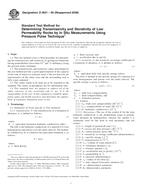
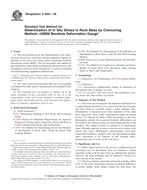 ASTM D4623-08
ASTM D4623-08 ASTM D4647/D4647M-13..
ASTM D4647/D4647M-13..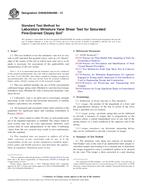 ASTM D4648/D4648M-13..
ASTM D4648/D4648M-13..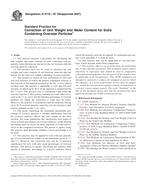 ASTM D4718-87(2007)..
ASTM D4718-87(2007)..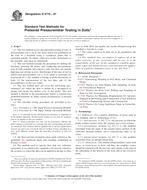 ASTM D4719-07
ASTM D4719-07 ASTM D4729-08
ASTM D4729-08
 Cookies
Cookies
